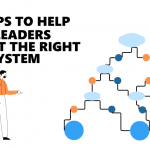
Best Business Practices for a new ERP Implementation
ERP implementation
The implementation of a new ERP system is a significant undertaking for any organization. However, it also provides an excellent opportunity to fully document and review the existing business practices within the company. Take full advantage of this opportunity, and carefully document and then review those current business practices, and identify any practices that are outdated, ineffective or inefficient. ERP implementation that incorporates these old business practices will simply perpetuate the old problems in the new system.
Some potential practices to be reviewed and potentially updated for an ERP implemenation would include:
- Sales orders – how are they created and the processed for fulfillment
- Purchasing – from requisition thru acquisition
- General Ledger – Account format structure
- Payables – From voucher to payment
- Inventory – How your items are numbered and categorized
- Warehouse – How is your warehouse organized to minimize friction in fulfillment
- Commissions – are your salespeople properly motivated and compensated
Successful companies are built on a significant competitive advantage. The competitive advantage that your company enjoys is most likely the result of your unique business practices. As a result, most companies view themselves as being “unique” and with complete justification. It is vital, though, to distinguish between what is a true “competitive advantage and what is simply the “way we’ve always done it”. These legacy practices are typically an ad hoc approach to conducting business within the constraints of the existing systems. Frequently, this legacy business practice comes from the creation of a process to circumvent a limitation of the legacy system. Going thru a structured process of reviewing and documenting these business practices will identify what is a true competitive advantage and what is merely a Band-Aid that covers the old problems.
Consider the following example: Our hypothetical company has chosen to implement a new ERP system, where the scope of the implementation included a complete top to bottom, and side to side, review of the company’s existing practices and processes. The project was not limited simply to the implementation of a new system to replace the old system. Working with their business management consultants, our hypothetical company invested a considerable amount of time and effort, identifying those business practices and processes that they considered to be unique, both to their company and to their industry. In this case, the company had previously implemented a custom ERP system, one that had been designed around the existing processes from the time of the original implementation.
One specific process wasn’t adequately addressed in the old system: the selling of a flammable gas, along with a returnable container (referred to as the “core” container). In the old system, this process was weakly defined and inadequately supported. The consultant’s project team focused on this process, and debated the very definition of this transaction: did this involve a single item (gas and container) or two items (the gas itself AND the container core, which included a deposit). A case could even be made that there were actually 3 items involved: Gas, plus container, plus the deposit. Eventually, it was determined that the “best practice” required that there be two separate sales transactions (the sale of the gas/container and a deposit held against the container) and two separate items (the sale of gas + core and the return of the core alone). The new process had the advantage of being more transparent to the customer, easier for the company’s employees to understand and describe to the customer, and the new process for tracking empty cores and returning them to the vendor was greatly improved.
How was the decision made? The project team started the process by reducing this complete transaction into its various component pieces, and to then construct a simplified business practice that addressed every step in as simple and straightforward a process as possible. Next, all of the variations to that process were considered and evaluated. This evaluation process allowed the company to realize that the previous process was overly-complicated, and that the procedure had been based on the restrictions and limitations of the old system. By carefully and completely reviewing the individual components of the process, and clearly stating the underlying assumptions, the company avoided replicating the old method in the new system. Eliminating the impulse to recreate the old process, simply because “that’s the way we do it here”, the review process allowed the project team to develop a new business process that improved efficiency and accuracy, without any negative impacts to customer satisfaction. The company gained a better process at no real cost to themselves or their customers.
When reviewing your own business practices for an ERP Implementation, consider the following tips:
- Talk to everyone involved. Ideally, try to get as many individuals and employees – including executives – from other departments in your company, active and engaged in project. You may not know what some of their issues are and their involvement will help them feel some ownership of the process and understand the decisions that are made.
- Discuss the issues with the employees who actually run the process. They know best what some of the problems are but they may never bring it up because they think it’s just the way it’s done. They may have some excellent observations about the existing process, and can suggest some needed changes, but they may feel inhibited about making those suggestions, finding safety in doing what they were taught, even if they know it is wrong or inefficient.
- Thoroughly document your existing business processes. Focus on what is being done currently, and try to identify why it is done that way.
- “Map” the new processes to the new ERP system, making sure that a new procedure has been identified to replace the old process where necessary.
- Design for the “worst case scenario”. Simply analyzing the “best case” will not be sufficient to truly test the new system. It is vital to push the most challenging and unusual instance thru the new system, otherwise you may not be prepared for it when it occurs, and they will occur eventually. Once your new process can handle the worst of what you can envision, the rest will be easy by comparison.
- It is critical to enlist the full support and participation from your company’s executives and senior management. Mid-level managers and employees will benefit knowing that the company fully supports this new initiative. Their participation is vital for the successful implementation of the new system.
Every ERP system, like the companythat is implementing it, is different. The more you can work with your new system during the implementation project, the more efficient your processes will be and you may be able to improve other segments of your business at the same time.





